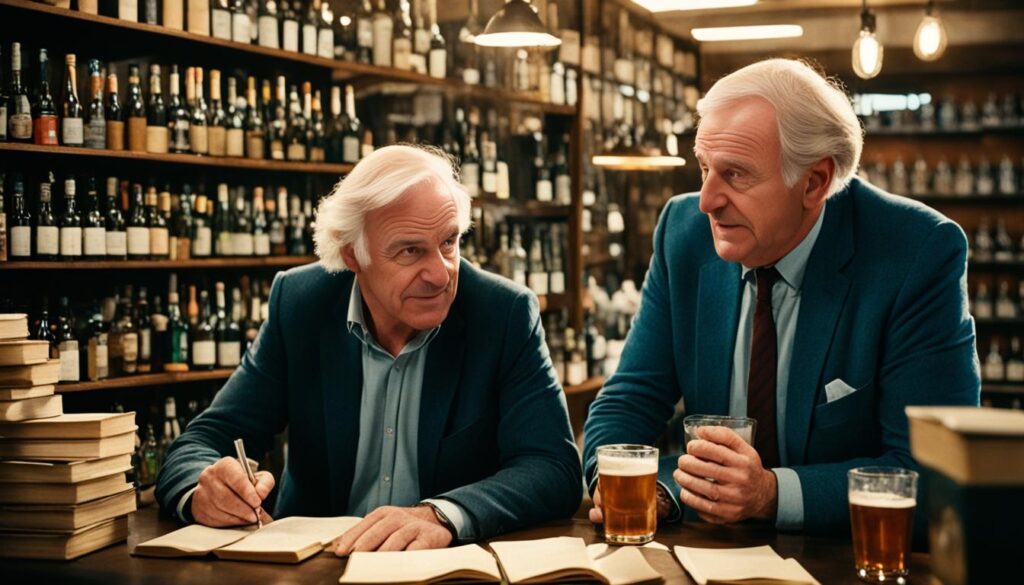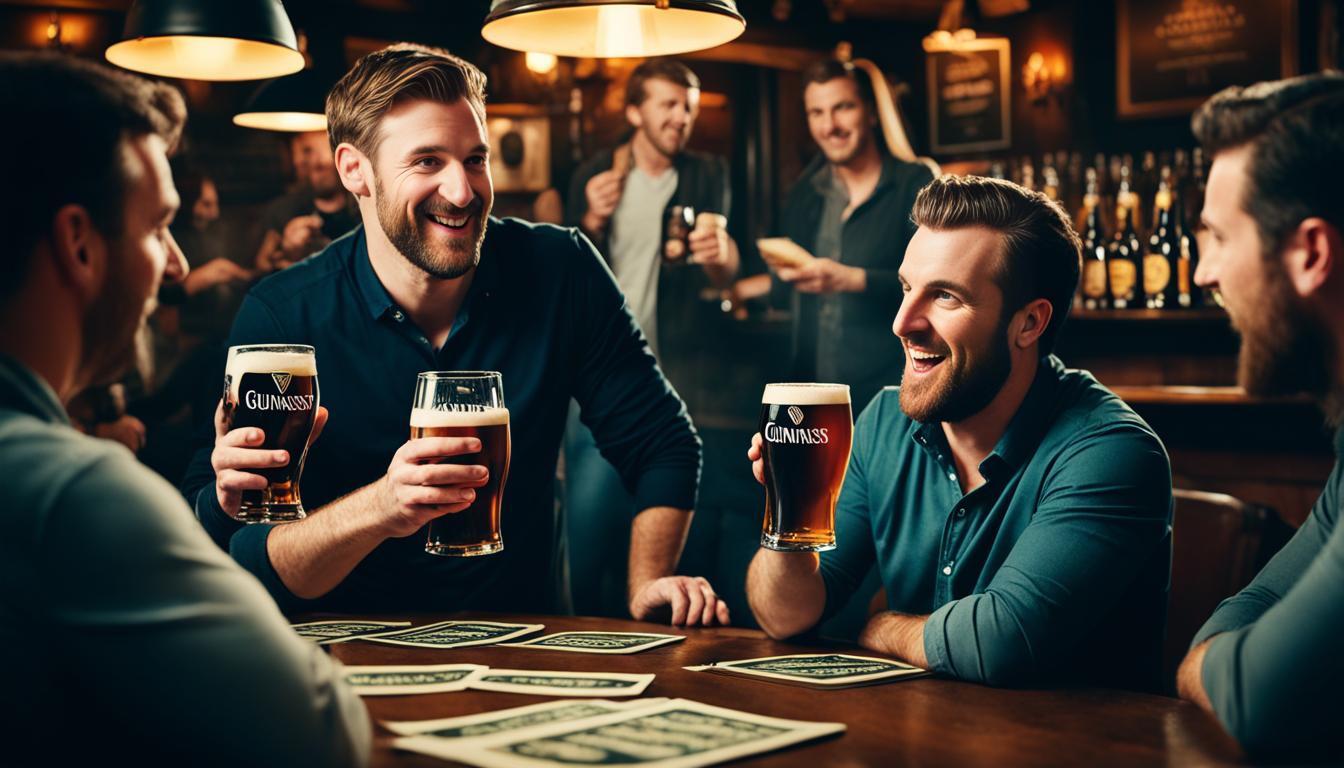The Guinness Book of Records, now known as Guinness World Records, has a fascinating origin story rooted in the lively atmosphere of Irish pubs. This iconic reference book, which has become a global phenomenon, began as a simple idea to help settle arguments among pub patrons. The brainchild of Sir Hugh Beaver, the Managing Director of the Guinness Brewery, the book was born out of a need to find definitive answers to the many questions and disputes that arose during lively pub conversations.
In 1951, Sir Hugh found himself at a shooting party in County Wexford, Ireland, where a spirited debate erupted about the fastest game bird in Europe. Frustrated by the lack of a reliable source to settle the argument, Sir Hugh recognized the need for a comprehensive book of facts and figures that could serve as the ultimate reference for such pub disputes. He enlisted the help of twin brothers Norris and Ross McWhirter, renowned fact-finding researchers, to compile a book that would provide answers to a wide range of questions, from the fastest animal to the tallest building.
The idea of creating a reference book to settle pub arguments quickly gained traction, and the McWhirter brothers set to work gathering information from various sources. Their goal was to create a definitive guide that would put an end to the countless disputes that arose in pubs across Ireland and beyond. Little did they know that their efforts would result in a publication that would capture the imagination of people worldwide and become a cultural icon.
Key Takeaways
- The Guinness Book of Records was created to settle arguments in pubs
- Sir Hugh Beaver, the Managing Director of Guinness Brewery, came up with the idea
- A debate about the fastest game bird in Europe sparked the concept
- Twin brothers Norris and Ross McWhirter were hired to compile the book
- The reference book aimed to provide definitive answers to various questions and disputes
The Fateful Shooting Party That Sparked an Idea
On a crisp November day in 1951, Sir Hugh Beaver, the managing director of the Guinness Brewery, found himself at a shooting party in the picturesque North Slob, situated along the River Slaney in County Wexford, Ireland. As the party set out to hunt, Sir Hugh took aim at a swift-flying golden plover, but his shot missed its mark. This led to a lively debate among the hunters about which game bird was the fastest in Europe: the golden plover or the red grouse.
The group scoured their reference books, hoping to find a definitive answer to settle the argument. However, to their surprise, no such record could be found. This lack of a conclusive answer sparked an idea in Sir Hugh’s mind – the need for a comprehensive book that could settle pub debates and provide definitive answers to various questions about record-breaking feats.
Interestingly, the original question that inspired the creation of the Guinness Book of Records was never actually answered within its pages. The book’s focus shifted from European game birds to world records across various categories. However, if one were to venture a guess, the red-breasted merganser, a fully migratory bird occasionally hunted, would likely hold the title of the fastest game bird in Europe.
Little did Sir Hugh know that this fateful shooting party and the ensuing debate would be the catalyst for a global phenomenon. The idea born on that day in County Wexford would eventually evolve into the Guinness Book of Records, a publication that has captivated readers for generations and become an integral part of popular culture.
Guinness Records’ Pub Origins
In 1954, Sir Hugh Beaver, inspired by the shooting party argument, envisioned a creative Guinness promotion aimed at resolving common pub arguments. He reached out to twin brothers Norris McWhirter and Ross McWhirter, who operated a fact-finding agency in London, to compile a comprehensive book of facts and figures.

Guinness Superlatives was officially incorporated on November 30th, and the McWhirters began working diligently on the book in a converted gymnasium on the top floor of Ludgate House, 107 Fleet Street. The ambitious project took 13 and a half weeks of intensive 90-hour work, including weekends and bank holidays, to complete.
Initially, Guinness printed and distributed a thousand copies of the book free of charge to pubs across Britain and Ireland as a promotional asset for their brand. The book quickly gained popularity among pub patrons, who enjoyed using it to settle friendly debates and engage in lively conversations over a pint of Guinness.
From Pub Promotion to Best-Selling Book
The first edition of The Guinness Book of Records, a modest 198-page volume, was bound on August 27, 1955. Little did the McWhirter twins know that their creation would soon become a global phenomenon. By Christmas of the same year, the book had already topped the British bestseller list, a testament to its instant popularity and widespread appeal.
Encouraged by its success in Britain, the book was launched in the United States the following year. An impressive 70,000 copies were sold, further solidifying its status as a literary sensation. Over the years, Guinness World Records has continued to captivate audiences across the globe, with more than 150 million copies sold in 100 countries and translated into 40 languages. The book’s ability to transcend cultural and linguistic barriers is a testament to the universal fascination with record-breaking achievements.
The McWhirter twins remained at the helm of the book’s compilation for many years, until tragedy struck in 1975 with the assassination of Ross. Norris McWhirter courageously carried on as the book’s sole editor, ensuring that the legacy of Guinness World Records would endure. Today, Guinness World Records Limited has evolved into a global brand, with offices in major cities around the world, including London, New York, Beijing, Tokyo, and Dubai.
As the book has grown and evolved over the decades, it has expanded its scope to encompass more than just world records. It now showcases achievements across various fields, serving as a source of inspiration for people worldwide to push the boundaries of what is possible and strive to become “Officially Amazing.” From its humble beginnings as a pub promotion tool to its current status as a global phenomenon, Guinness World Records continues to captivate and inspire generations of readers.
The Evolution of Guinness World Records
From its humble beginnings as a pub promotion, Guinness World Records has transformed into a global authority on record-breaking achievements. The company maintains an extensive world records database, housing over 53,000 records across various categories. To ensure the authenticity and integrity of these records, Guinness employs dedicated record adjudicators who meticulously verify and validate each record attempt.
Over the years, the book itself has undergone significant changes, evolving from a text-heavy reference to a visually stunning, illustrated compilation. Each edition features a curated selection of records from the vast archive, showcasing the most impressive and fascinating achievements. Guinness World Records also encourages individuals and organizations to propose new record categories and attempt to break existing ones, fostering a spirit of innovation and pushing the boundaries of human accomplishment. This evolution mirrors the shift in public fascination, from local superstitions like the New England vampire panics of the to global phenomena and extraordinary feats.
In 2005, the company introduced Guinness World Records Day, an annual celebration held on November 9th. This event serves as a platform for record-breaking attempts worldwide, inspiring people from all walks of life to challenge themselves and make their mark in history. The popularity and reach of Guinness World Records have solidified its position as the primary international authority for cataloguing and verifying record-breaking achievements, captivating audiences and inspiring generations to push the limits of what is possible.

Leave a Reply